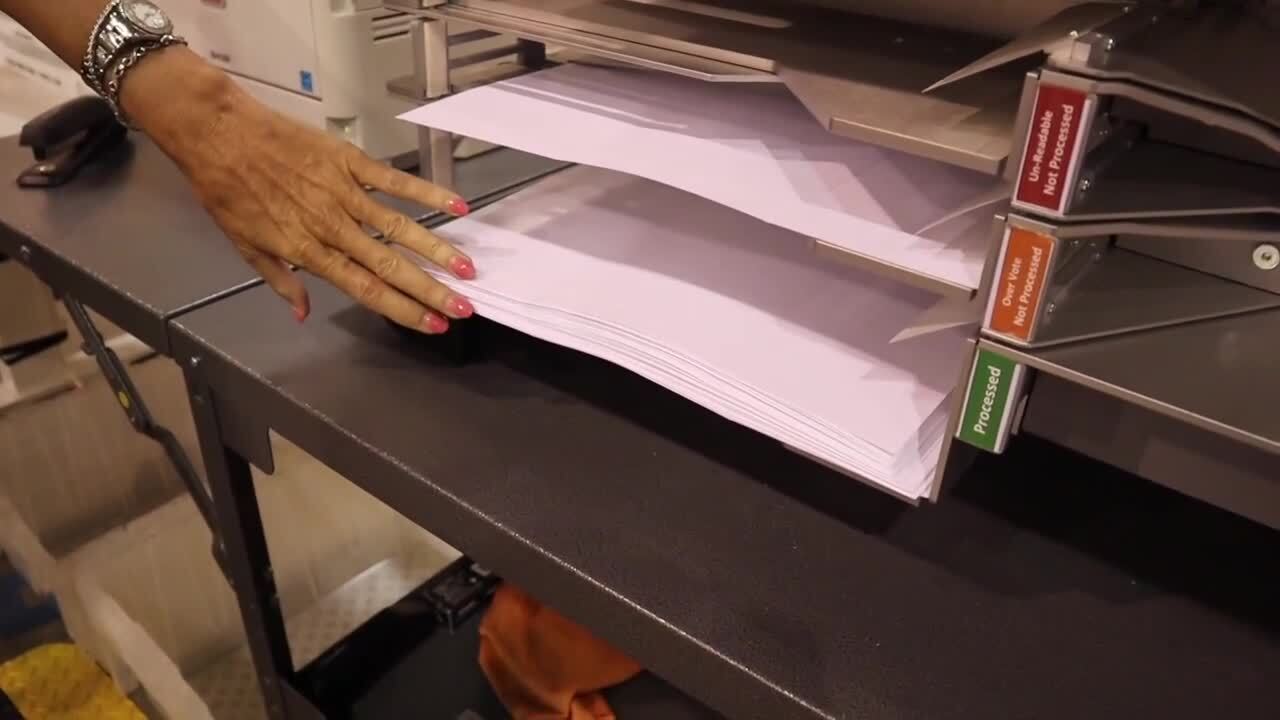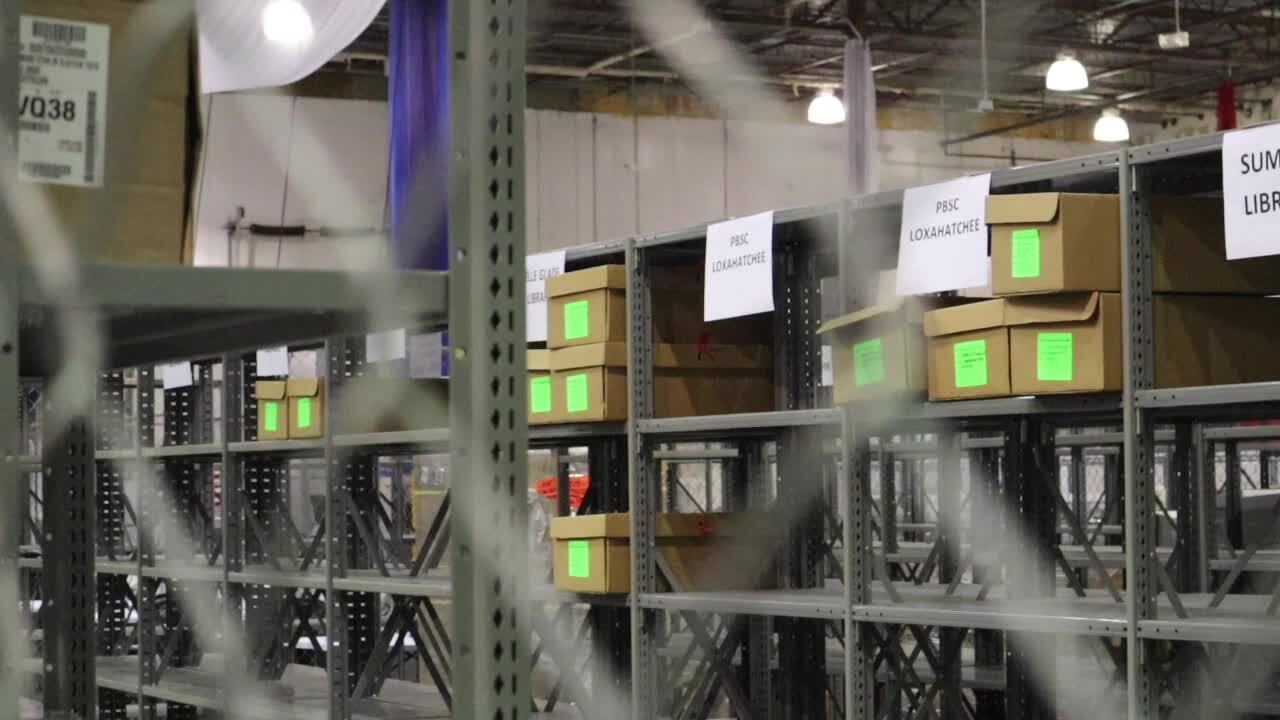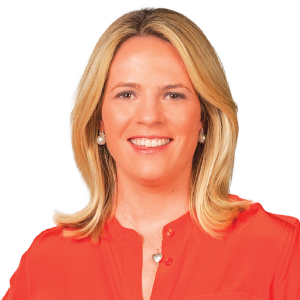RIVIERA BEACH, Fla. — Palm Beach County Supervisor of Elections Wendy Sartory Link took WPTV on a special tour of the tabulation center, unveiling what's behind lock and key.
"We'll follow the life of that ballot," she explained.
She said now more than ever, it's important to show the process to the public.
"People have a lot of questions about integrity of the process, whether fraud is involved and how that can be done," Sartory Link said. "And I feel like, if they can see the process and understand the number of safeguards that are in, at least it allows them to ask better questions."
She explained the process of creating a ballot.
"We're not just looking at, did we spell your name correctly?" she said. "Did we get your name on every precinct ballot that it should be on?"

Sartory Link went on to show what happens after voters request a vote-by-mail ballot.
"Once we have your valid vote-by-mail request, now we're going to get prepared to send you your ballot," she said. "I'm going to show you that now."
She showed WPTV the "inserter," a machine that gathers each ballot, secrecy sleeve, "I voted by mail" sticker and return envelope and puts them into the packet a voter receives in the mail.

"(The machine is) pulling all of these one at a time and putting them into the outer envelope," she explained. "This (section of the machine) is dropping out things that it thinks are wrong."
She said the machines knows if the right amount of papers are in a packet.
"First, it's set to only take one of everything, but then as a double check, we calibrate it daily so we know how much it's supposed weigh," Sartory Link said.
There is also a hand check, she said.
"We are checking manually every 100th one," she said.

The machine also prints personal information onto the envelope.
"Every voter has a unique bar code that's put on that envelope," she said. "That bar code is very important, because it's how we track your ballots."
A different machine then takes a photograph of every envelope headed out the door, then sorts them by ZIP code.
"We're a closed loop, so if we didn't send you a ballot, we can't receive one back from you," Sartory Link said.

She said vote-by-mail has become a recent focus.
"Vote-by-mail has become very important, because in Florida, with the three ways to vote, vote-by-mail is the fastest growing," she said.
After a voter fills out the ballot and sends it off or drops it off, it then comes back to the tabulation center. The same process will occur.
"But this time we are recording who brought them back to us," she said.
The machine scans the bar code and takes two photographic images that show the entire outer envelope.

"It's also going to narrow in on that signature, and that's because we're going to use that signature later to check that signature to make sure it matches what we have on file for that voter," Sartory Link said, explaining that every single ballot that comes back through vote-by-mail goes through this process.
She went on to say that if elections officials are reviewing the signature and having difficulty, it will be referred.
"Referring it means it's going to go to a second-level review," she said. "When in doubt, refer."

Potential problem ballots need to be manually scanned.
"Then they have to figure out why is this a problem ballot," Sartory Link explained.
The next step is ballot accounting, but first, the ballots remain sealed so they can go through a public viewing process.
"If somebody says, 'I believe that John Smith voted in this election. He got a ballot, but I happen to know he moved,'" Sartory Link said as an example.
Once that allowed time is over, the opening of the ballots begins. Sartory Link said the workers have to put their cell phones and personal belongings in lockers.
"Opening means were ready to start counting these ballots," she said. "We're going to pull out the secrecy sleeve and the ballot."
She explained the person opening the ballot is not looking or seeing who sent it, based on how the papers come out.

The ballot accounting form is key to the process. Sartory Link said it travels in every sealed ballot box.
Then the seal number is confirmed.
"Every time it gets to the next section, it has to be verified that we still have the correct number," Sartory Link said.
The ballots are always under camera at the tabulation center, and the tabulation area itself is access only.
"The machine is tabulating, but by law, all it's showing us is our numbers, so that we can keep track, but it's not telling us how people voted," Sartory Link explained. "The machine knows. We don't."

A separate audit system then serves as a check-and-balance system.
"This is something that our county is very fortunate to have," Sartory Link said, explaining the machines are not connected in anyway.
Sartory Link said talk of hackers and machines recently can be addressed with tours like this.
"That's why we like them to come see the process, because there is nothing attached to the internet," she said. "Every time they tabulate at the end of the day, the data is transferred, not through the internet. It's just going directly from these machines into our server. After the close of polls, then they run a program on that server that goes ahead and gives us the tabulation scores of each candidate."
Finally, the canvassing board is key to the process. The members sign a nonpartisan oath. It's where the deeper dive into problematic ballots takes place. The public can see the process on a screen and through a window. They look at things like damaged ballots and the duplication process.
"There are three people on the canvassing board, so majority vote wins," she said.

On Election Day, the polls close and the machines are then run for results from in-person voting. Each precinct reports.
"They're going to transmit their election data to us from the polling locations into our server here on a direct secure line," she said. "But they're also there, on that same night, they're going to be returning the ballots."
Sartory Link said physical ballots are stored in the warehouse for an agreed upon time.
"We're now storing them here, because if there's a recount, we're going to have to pull them all back out," she said, pointing to early voting ballots.

The supervisor of elections said tours like these take a close look at the multi-step process.
"We just really want to be as transparent as possible and show everybody how we do it, why we believe it’s safe,” she said. “And Hopefully, understanding it better, trusting it better, makes everybody breathe a little easier."




